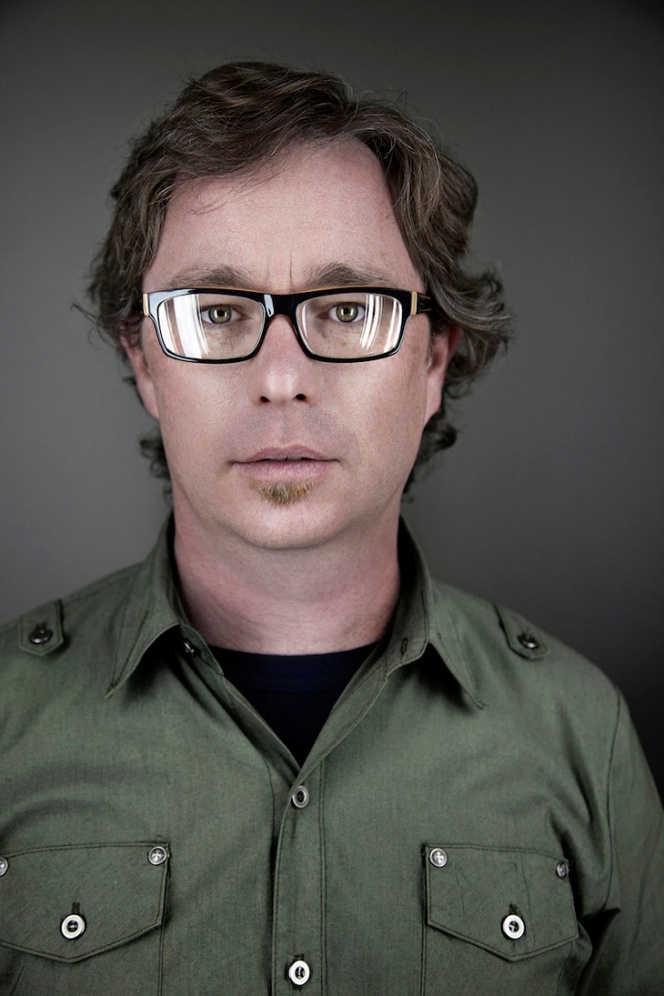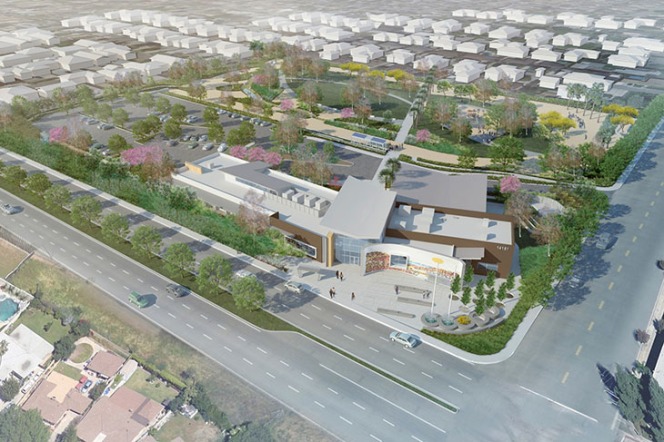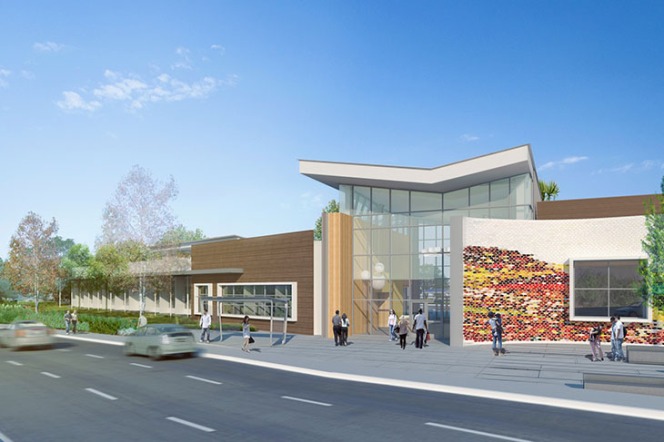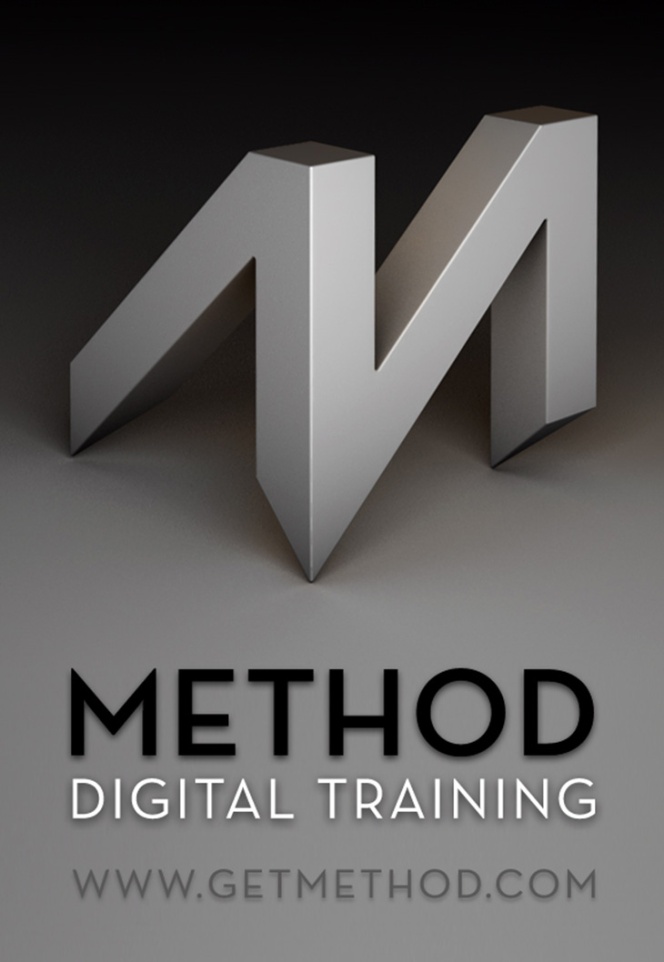Your Cart is Empty
Recent Articles
- Efficiency Meets Innovation: SketchUp 2024 Unveiled
- Maxon One Spring 2024 Release Packs Particle Power, Toon Shading, and More
- TurboCAD 2024 Unveiled by IMSI Design: Discover the New Features and Enhancements
- Exploring the Latest InfraWorks 2025 Updates
- Introducing the Latest Innovations in Autodesk's ReCap Pro 2025
- Discover the Latest Enhancements in Civil 3D 2025
- Exploring the Newest Features and Enhancements in Revit 2025
- Explore the Latest Features in Vantage 2.3 Update
- Explore the Latest AutoCAD 2025 Enhancements: Activity Insight, Smart Blocks, and Apple Silicon Support
- Unveiling Enscape 4.0: Revolutionizing Design with Unified Experience for macOS and Windows Users
The Edge: Evan Troxel’s Show and Tell.
July 31, 2013 12 min read

Novedge: Tell us a bit about who you are and what you do
Evan Troxel: My twitter bio is constantly changing,
but I like how we are limited to 160 characters to keep our story
concise. I feel compelled to do that here too as we all know that as
busy professionals there isn’t a lot of time to read blog posts about
others for fun very often. One could learn a lot more about me at my
website, but here is my twitter bio in bullet points with a little
further explanation:
- Designer – I am an architectural
designer working both on my own and at HMC Architects in southern
California on K-12 schools, higher education, civic/government
facilities, and residential projects.
- Dad – My beautiful wife and I have
four, young impressionable children between the ages of 7 and 11, and
one adult offspring. I drive a large car because of it. We love
adventure and try to explore the world and learn and experience as
much as possible together. I am confident they will become amazing
citizens because we expect nothing less.
- Podcaster – I cohost the one and
only Archispeak Podcast where we have a
casual conversation about all things architecture. This is super fun.
- Maker – Unless I’m outside
experiencing nature, I’m happiest in my workshop. I love making
things with my hands and could tinker all day. I work in steel and
wood; I love to build bikes and fix cars. I currently have a ’69
Datsun Roadster that I’m restoring between other projects.
On the path to becoming a
real/better architect, trying to change the profession for the better
– I am in the process of becoming a licensed architect which is no
simple task, and am working on some very big projects with some other
key people in the industry. I think the profession is pretty much
broken and am very engaged in redesigning it for the future.
I teach everything I know – I do
video tutorials for architectural designers at Method. This is where I show everyone how to use my favorite
2D and 3D digital design tools and workflows so they can go out and
unleash their creativity when designing what the world needs a lot
more of – great architecture. I’m working on a huge new thing here
(yes, this is a teaser) so stay tuned.
Novedge: I love your artwork, in particular the Desolation Series. How does architecture inform your photography and vice versa?
Evan Troxel: I have learned a lot when it comes to
both of these disciplines, and they inform each other every day when
I’m creating a story about the projects I’m working on. The
Desolation Series is very much a marriage of the two. I believe
architecture should be like cinema, and I’ve written about this in an
article I published on my website about the late architect John
Lautner’s work.
When I was designing the Desolation Series of images, I wanted to
evoke a cinematic feel for the viewer using previously crafted
digital models of my architectural projects in a new way. I was using
my photography knowledge when planning the scenes and designing the
perspectives.


It may be interesting to note why I chose the rendering tool I did for the series. Maxwell
Render is a physically accurate rendering engine, meaning it produces
the exact behavior of real light and materials to produce extremely
realistic images. With it you control a virtual camera that is based
on real world camera controls, so it helps to have experience in
photography, but it isn’t required. You control things like focal
length, film size, aperture, shutter speed, and ISO to create effects
like vignetting, grain and depth of field to make virtual photographs
using different combinations of these settings. I’ve even done
tutorials on Method that go over the basics of these techniques, so
check them out if this interests you.
The Desolation projectwas all about
creating mood and a feeling of – you guessed it – desolation. I
wanted the images to be stark compositions so I experimented with
lighting, camera angles and environments to achieve a feeling of
loneliness. There are lots of images of architecture that are
cartoony, in-your-face, or bright and happy. I felt it would be an
interesting project to see if I could evoke another feeling that we
don’t often see in the imagery of our projects. Ultimately they were
printed out on large format plotters at ten feet long and put up in
our studio. They have much more of an impact at that size than they
do on a computer screen to say the least.

Photography is one of my hobbies and I
now publish (what I consider) my best images on my site. I have a weekly photography series
(http://evantroxel.com/blog?category=Weekly%20Photo) and a gallery of
other images as well. I absolutely fell in love with photography a
few years ago after I forced myself to learn how to use SLR cameras.
It ties right into how I see the world and how I design buildings so
that they are experiences. My family sees it differently – I am often
left behind wandering around making images as they venture ahead and
then I have to run to keep up.

Novedge: What drew you to design educational spaces?
Evan Troxel: We must never forget that the projects we do are about the people that use them, and in most instances for
me, those are kids. I love having the ability to inform and delight
so many people about architecture as I can in public projects. There
are huge problems that need to be solved and further resolved for
each of the entities we work with. The world needs better design, and
the people that pay for what we do need to be given as many examples
of good design as possible to their successors as they are growing
up. Making places for kids is probably the most rewarding project
typology I can think of because we are making better places for them
to experience learning in.

Education changes so fast. Quite often
it moves faster than the institution itself. But the kind of design
that architects can offer these institutions is so important because
it can solve problems on so many levels. To quote a book I read last
year called Designing the Design Firm by James O. Jonassen, “Design
is …a moving human experience, a performance improvement, and
better yet, transformation for the enterprise involved, and to
achieve this with the least consumption of resources including money
and time.” The part that really resonates with me is the
transformation of the enterprise involved. Often they are trying to
just solve a single problem – their current facilities no longer work
and they need a new one. I like to approach a project knowing that we
have the opportunity to change their entire organization for the
better. If they partner with us, that’s what they get, and it’s
probably going to be something they couldn’t have ever dreamed of.
Novedge: You are the co host of a podcast
called Archispeak and are really active on social media, blogging,
etc. What do you like about these different mediums and why are they
important?
Evan Troxel: Archispeak is the podcast that Neal
Pann (@npann), Cormac Phalen (@archy_type) and I (@etroxel) started
this year. We all met on Twitter (thus the Twitter handles) and
gravitated together because we talk about all the things that most
architects don’t talk about, which is to say both the good and the
bad things we deal with on a daily basis working in architecture. We
started the podcast as an experiment and here we are still doing it
after 6 months. It’s a core value of mine to actually make things,
and this podcast is a result of that mantra. We all talked about it
for a couple of months but then agreed that we had talked enough. We
had to actually make a commitment and put our creation out there.
It’s not easy coordinating schedules for three guys busy with jobs,
families, hobbies and professions, but it’s important for us share
our thoughts and what we know.
The reason we started the podcast was
twofold: first, recording a conversation and posting it for the
entire world to hear is a lot like blogging, only it’s easier than
doing all that writing, not to mention it’s great for all those
people who commute to work every day. During our conversations, we
figure things out together and bounce ideas off each other just like
a team working on a project in a design studio, even though we’re
thousands of miles apart. We want to get those already in the
profession excited and reinvigorated about fixing some of the big
problems in the industry. It’s a great way to get these conversations
started and out in the blogosphere and social media where they
continue after the episodes are published.
Second, it gives us the ability to make
that conversation available to a very large audience that for the
most part has no idea what architecture is or what architects do
beyond what they’ve seen on TV. We do preach to the choir quite a
bit, but a goal of ours is to let everyone, not just architects, see
behind the scenes of why we do what we do. We do disagree internally
occasionally, but it’s satisfyingly strange how often our experiences
line up with each other even though we do pretty different things. We
even get a lot of comments from students in architecture school
saying ‘thanks’ for showing them what it’s really like working in a
firm. For the most part studio professors are completely disconnected
from professional offices so they steer clear of those conversations
with the students which is a disservice to them. These students are
people getting ready to embark into an unknown world they have
already pretty much devoted their lives to, because that is typically
what architecture requires, and they deserve better.
The ability to have an audience that
interacts with us is the best part and a big driver behind why we do
it in the first place. Some conversations start on Twitter or our
Facebook page and continue into the podcast, and some go the other
way around. All of the mediums work together to create a continuous
stream to enable involvement by as many people as possible. It’s no
secret that our industry has suffered because of a lack of
communication over the years. We want to put a stop to that and just
talk about everything, air our grievances and celebrate our victories
together.
I ultimately think that social media
(blogs, Twitter, Google Plus, Facebook, LinkedIn and podcasting) will
all help facilitate a revolution in the architectural profession. A
version where everyone is invited and included in the conversation.
All of these channels are important and architects should be getting
involved. It’s a lot of work, but one of my favorite quotes
(unattributed) is “The future belongs to the few of us still
willing to get our hands dirty.” I love getting my hands dirty
and I hope everyone reading this will join me.

Novedge: What is a recent project that you worked on?
Evan Troxel: A project that I’ve recently worked on
at HMC Architects is about to start construction. It is a community
center where half of the facility will be occupied by a nonprofit
youth counseling program, and the other half will be used by the
local community it serves. The design process took over two years and
included many committees from various entities in LA county
coordinating and collaborating throughout the entire process. My team
was responsible for the architecture and above all making sure
everyone’s needs were being integrated and interpreted into a design
that did all of those things I wrote about earlier – a moving human
experience, a performance improvement, and better yet, transformation
for the enterprise involved, and to achieve this with the least
consumption of resources including money and time.


The building is situated prominently on
the corner of an open site that is currently used as a sheriff’s
cadet training grounds. It was placed in a prominent way that
expresses itself as a valuable community resource while at the same
time allowing passers-by the ability to see through the building to a
new park on the other side, exposing the entire utility of the new
facility to the neighborhood. Transparency, way finding,
indoor/outdoor space, massing and materiality are all part of the
parti of the design. These themes are dominant in the project where
large spaces on the interior have direct connections (through
line-of-sight, transparency, and materials running continuously from
inside to outside) to exterior adjacent spaces. While having meetings
with the local community members during the design process, a big
goal was to create a facility that they were going to become the
proud stewards of in the future. Their ownership of the process was a
key part of the success of the project up to that point, and will
continue to be in respect to the the maintainability of the building
in the future. I have no doubt it will be treated like a jewel, but
also used to its full capabilities by a community in need of such a
place.


Novedge: What software do you use?
Evan Troxel: Software is a tool that allows me to be
creative, so I’m always on the lookout for tools that can help me
push my boundaries because I want to be as creative as possible. I’m
blown away by what software developers have come up with in the last
10 years. We no longer have to use so-called industry standard tools
that are stuck in the past and continue to be bandaged up to continue
to function. My current toolbox is made up of a few tools that work
very well together and compliment each other. I firmly believe in
using the best tool for the job, and I take pride in knowing a decent
amount about a lot of various tools. I don’t care for tools that try
to do too much, or for those that try to do it all. I like the
programs that have made choices about what problems they are trying
to solve and do those things extremely well.
For CAD, I use DraftSight by Dassault
Systèmes only when I have to, because I couldn’t care less about CAD
anymore. I much prefer to be working in a parametric environment à
la BIM, or what I call “BIM-light” because I don’t use
full-on BIM apps as much as other people in my world on a daily
basis. My favorite 3D modeling program, by far, is formZ by
AutoDesSys. With their complete rebirth at version 7, it is truly an
intuitive and extremely efficient modeling powerhouse. It also has a
2D environment that is BIM-light where it live-references 3D models
for the production drawing side of projects. Can you tell I like it?
In the BIM category, I have used both
Revit and ArchiCad heavily. HMC uses Revit so that is what I’m
currently using. I taught ArchiCad and Revit for years at Cal Poly
Pomona in the architecture department and my experience is they both
do basically the same thing. They have different strengths and
weaknesses that create a religious-like tension amongst their users,
but I don’t have time for that. I’d rather be designing great
buildings. You don’t have to tell me that BIM is great. I already
know. But if I had to choose on my own, I’d pick ArchiCad because it
runs natively on the Mac. Maybe Revit will one day as well, but I
currently run it in Boot Camp at the office (I am one of the few
people with a Mac on my desk).
There are so many other great programs
I use daily. I love Maxwell Render and Artlantis for rendering. They
are so enjoyable to use! I use Pixelmator as a Photoshop replacement
and Sketch as an Illustrator replacement on my Mac. Up in the clouds
I use Evernote to store almost everything along with Dropbox. I live
by OmniFocus, TextExpander, LaunchBar and Fantastical for getting
things done. I edit the Archispeak podcast in Logic Pro. I use Adobe
Lightroom to manage and edit the thousands of photos I make. I
couldn’t live without Camtasia and Keynote for making my screencasts
at Method. There are literally hundreds of apps (mostly photography)
on my iPhone and iPad that I can’t live without but I’ll spare you
from my continued ramblings. Basically software on the Mac and
iPhone/iPad platforms is a playground that I visit daily and am
continually impressed by.

Novedge: As a teacher, what are some of the
most important things you would like your students to take with them
once they graduate?
Evan Troxel: The beauty of an education in
architecture is the flexibility of the skills students acquire to do
almost anything design-related. It teaches people how to solve
problems from a huge array of perspectives. Physically, graphically,
collaboratively… the list goes on and on. They could go into
furniture, retail, technology, fashion, footwear, print, online, or a
myriad of other opportunities. But it’s my true hope that they go
into architecture, and that they make it better. The profession needs
them. It needs them to to keep it relevant and at the same time
recreate it and see it from a new perspective.
The world needs better architecture,
and as the stewards of the built environment, we as architects will
only continue to do so if we seize it. This starts with the students.
They are the life-blood of the future of the industry, and it is my
hope they are ready to take it on. I will do everything I can to be a
leader, do my part and help them achieve their dreams. It sounds a
little cheesy, but it’s true.
Would you like to see more of Evan’s work? Check out his website and don’t forget to connect with him on Twitter.
Also, follow his talks on Archispeak and his tutorials on Method.
Related articles
Also in NOVEDGE Blog

Maxon One Spring 2024 Release Packs Particle Power, Toon Shading, and More
April 10, 2024 4 min read
Read More
TurboCAD 2024 Unveiled by IMSI Design: Discover the New Features and Enhancements
April 10, 2024 2 min read
Read MoreSubscribe
Sign up to get the latest on sales, new releases and more …








